We took a good look under the hood of the Ruger LCR a while back and also did a field report on the LCR in 9mm. Since that time, I’ve been doing some additional shooting with the .38 Special version of the LCR, and I’m nearing the 350 round mark. As such, I thought it was time for me to share some of my latest observations on this innovative snubby.
Lots to like
The flagship LCR offended my aesthetic sensibilities at first, but when I gave the gun a fair shake, I realized there was a whole lot to like, there.
The most impressive aspect of the LCR for me was the trigger. As I’ve noted previously, that patented cam system gives the LCR and excellent trigger for a mass production gun. The pull on the LCR is sufficiently light and smooth to feel like a marked improvement on the standard, Smith & Wesson J-Frame trigger.
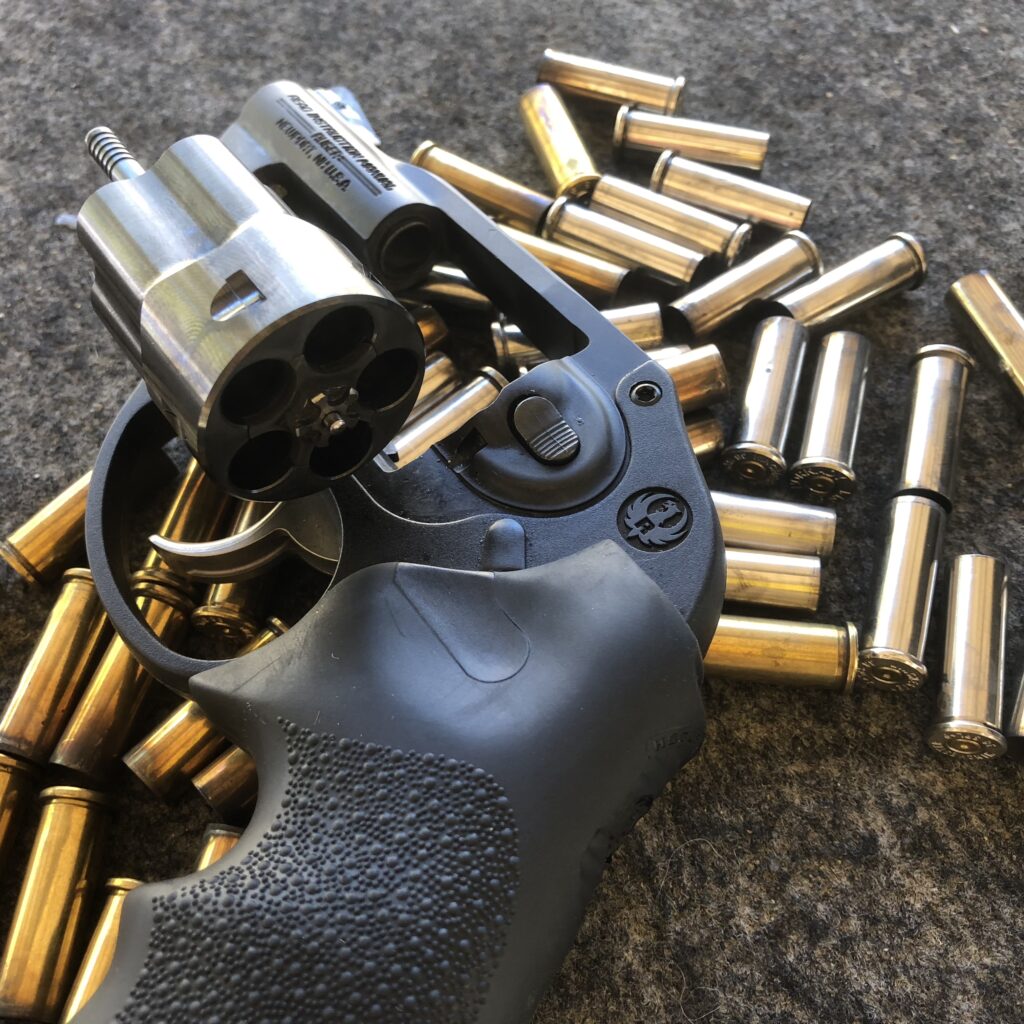
The sights on the LCR, while basic, are also better than the S&W standard. They feature a wider blade (with white highlights) and a wider notch, for a more contrasting and visible sight picture than you get with a J-Frame. I’ll eventually paint the front sight orange, for greater contrast (as I do on all my guns) but the OEM sight is a step up from what you’ll see on the competition.
Lightweight
One of the design objectives of the LCR was to create a lightweight revolver (the “L” stands for “lightweight,” after all), and Ruger succeeded handily with this. By mating a polymer fire control housing and grip frame to an aluminum upper (which houses a steel barrel and cylinder), Ruger managed to create a flyweight revolver that bests the aluminum-framed Smith & Wesson Airweights by an ounce or so (a .38 Special LCR weighs 13.5 ounces, compared to 14.4 ounces for a Smith & Wesson 642).
That’s both a good and a bad thing, depending on your needs and perspective.
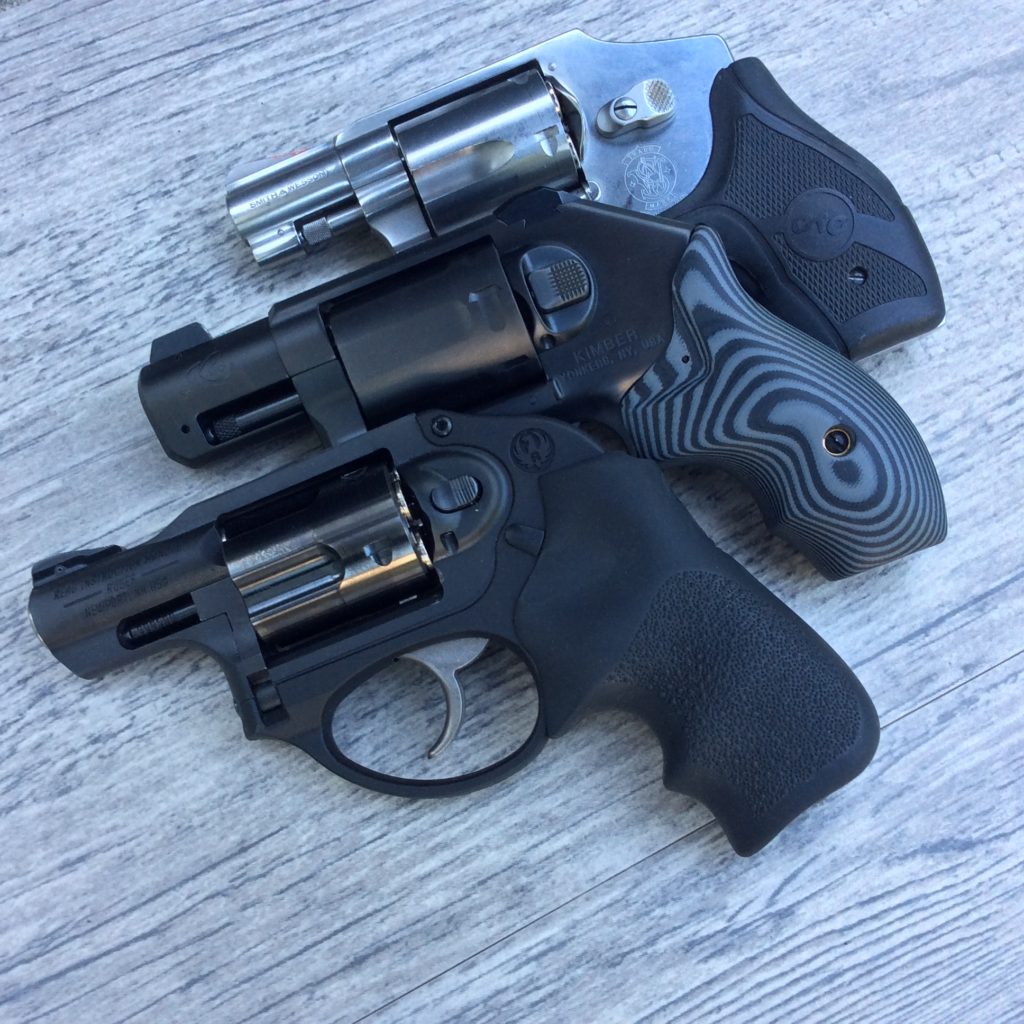
If you’re looking for a pocket gun that won’t drag your shorts down, or an ankle gun that won’t feel like an exercise leg weight, then the LCR is your huckleberry. I know S&W makes some lighter guns with unobtanium frames and cylinders that shave even more ounces (like the 340 PD, at a mere 11.8 ounces, with a 4-figure price tag—ouch times two!), but the LCR costs less than half as much and still rates as one of the lightest snubs out there.
I was dramatically reminded of this during a recent shooting session when I switched from shooting a Colt Night Cobra (26.2 ounces) to the .38 LCR—whoa! The Ruger felt like a young boy’s cap gun in comparison to the all-steel Cobra, as it does when pitted against my all-steel S&W 640 (around 22 ounces) or Kimber K6s DC (23 ounces), as well.
Bit of a beast
This exacts a price on you when you’re shooting it, though.
I’m the first to admit that I’m not a big fan of recoil and my tolerance for it is relatively low. While I’ve successfully managed full bore, 158 grain, .357 Magnum in a steel snubby before, I don’t like it and I’m not willing to put up with the nasty recoil and slow recovery for the added power margin. I stick with 130-135 grain, .38+P in my steel frame snubs and I’m quite content with the result. Honestly, I feel like a good .38+P load is the outer limit of honest-to-goodness snubby controllability for me—at least with the abbreviated boot grips that I prefer on these guns.
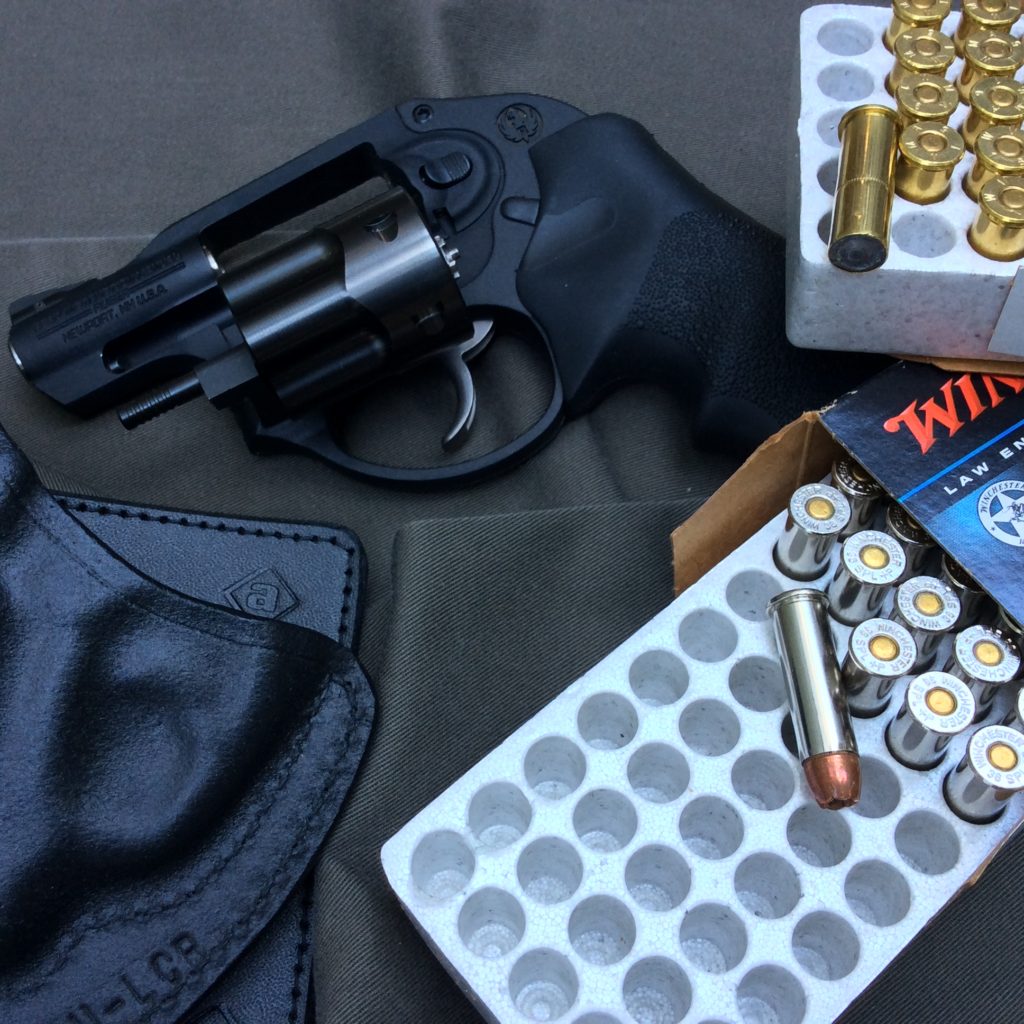
Those same .38+P loads in the LCR are a different story. The hotter .38 Special +P loads in the polymer-framed Ruger start to feel a lot more like a .357 Magnum in a steel gun, to me–not quite as bad, but definitely closer to a .357 experience than a .38 experience.
The most objectionable part of the recoil for me was the trigger slap that I experienced. I think the LCR’s trigger face is both narrow and slightly crowned, and the combination tends to focus the recoil energy on a narrow ridge, as the muzzle snaps upward in recoil. The excellent Hogue Tamer grips eliminate any discomfort in your web or palm, and the muzzle rise itself wasn’t a noticeable problem, but my trigger finger felt like it was getting whacked with every round fired, and it didn’t take long to get sore. By comparison, my S&W 640 has a wider and flatter trigger face (I did have the trigger face polished by the Custom Shop, to break the sharp edges), and the gun weighs significantly more, so it’s more comfortable to shoot with the same ammunition.
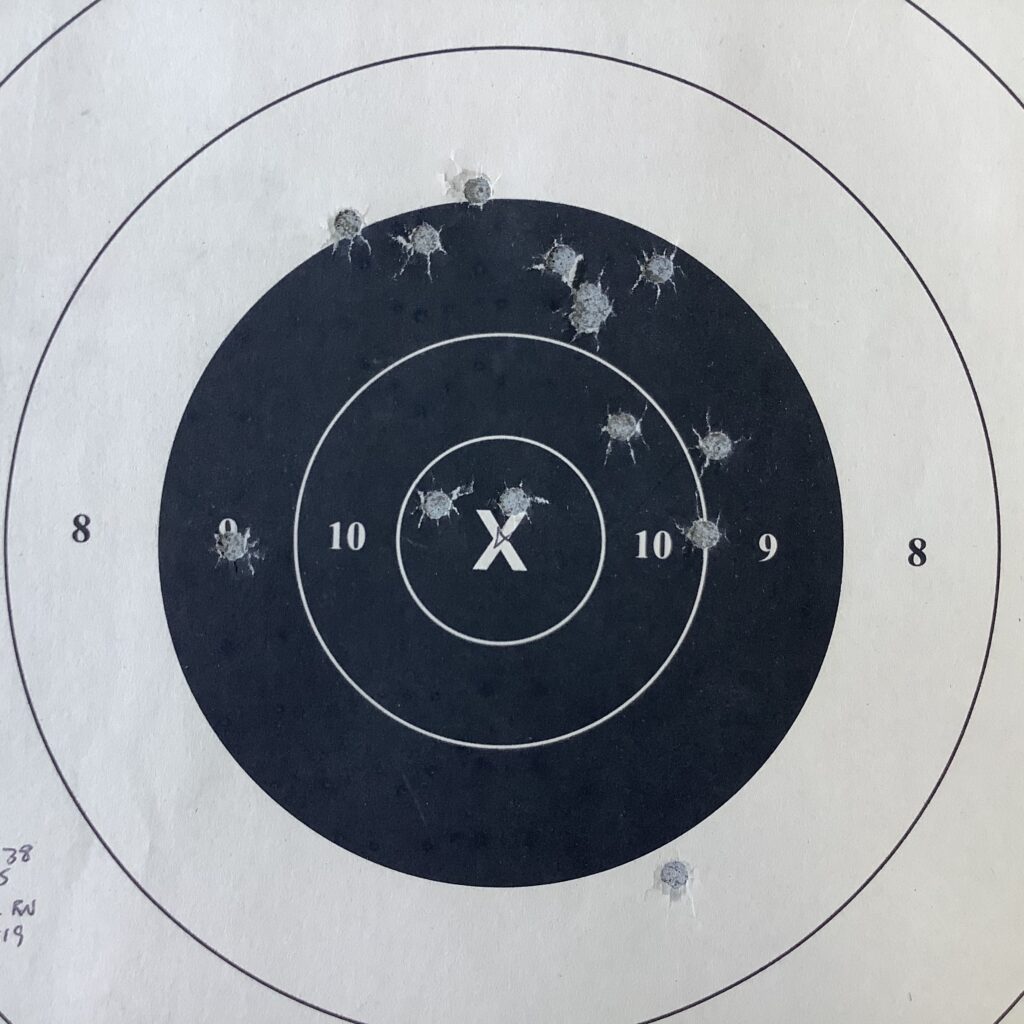
This trigger finger discomfort is guaranteed once you start to bump up to the heavier bullets. The standard pressure 158 grain and 158+P loads that I shot in the LCR weren’t much fun at all. I thought they were a little much for the 13.5 ounce snub, and I was glad when I exhausted the supply I’d brought to shoot.
Ammo recommendations
For my mileage, a mild, standard pressure, 125-130 grain FMJ or 148 grain wadcutter is the sweet spot for a training load in the .38 Special Ruger LCR. You can shoot these without any drama or icepacks–especially the wadcutters. Still, this is not a shoot-it-all-day-long kind of gun, in my opinion. Instead, I found that I was done by the time I’d fired 75-100 rounds of training ammo in this flyweight. In fairness, I’d say that about any lightweight snub, so that’s not a hit on the LCR, just a general observation about the type. I should also note that this is more than I’d expect to get out of a pocket .380 ACP in one session—score one for the round gun.
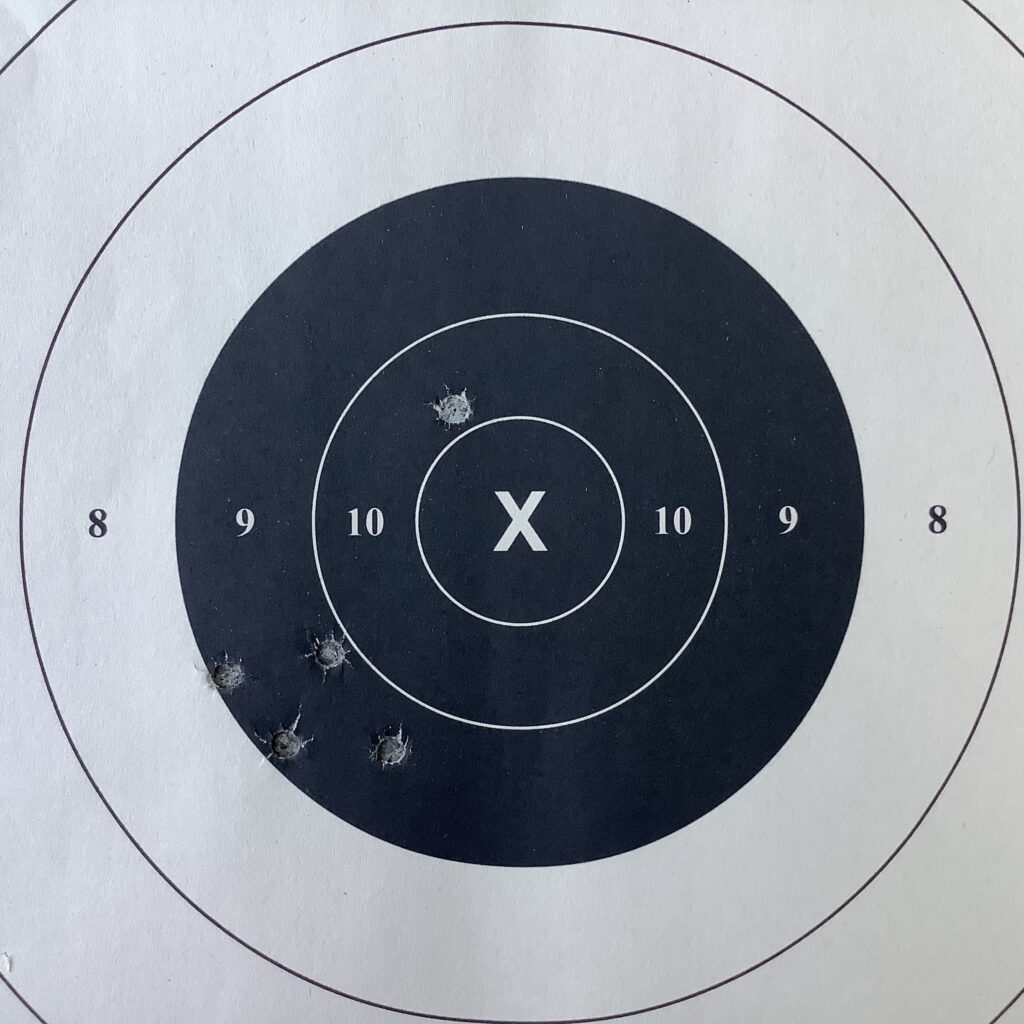
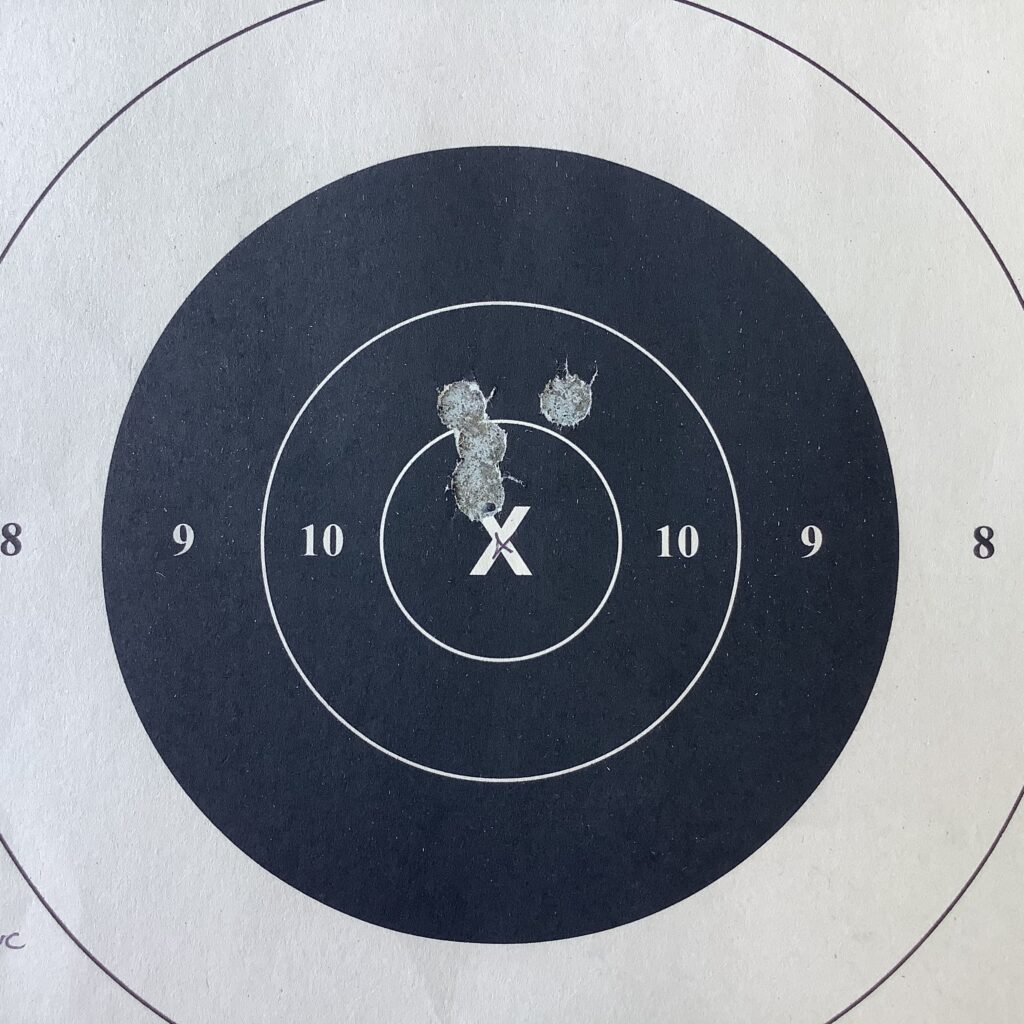
Defensive load selection gets a little more tricky in the .38 LCR. In an effort to keep the recoil low, I might have been tempted to recommend a 125 grain, standard pressure, JHP load, but with the passing of the Federal Nyclad and the Speer Gold Dot (the #53722 load, which doesn’t seem to be catalogued any longer, even on the LE side), the only choice I’d consider would be the Hornady 125 grain XTP American Gunner. It probably won’t open up much out of a snubby, but it should go deep enough.
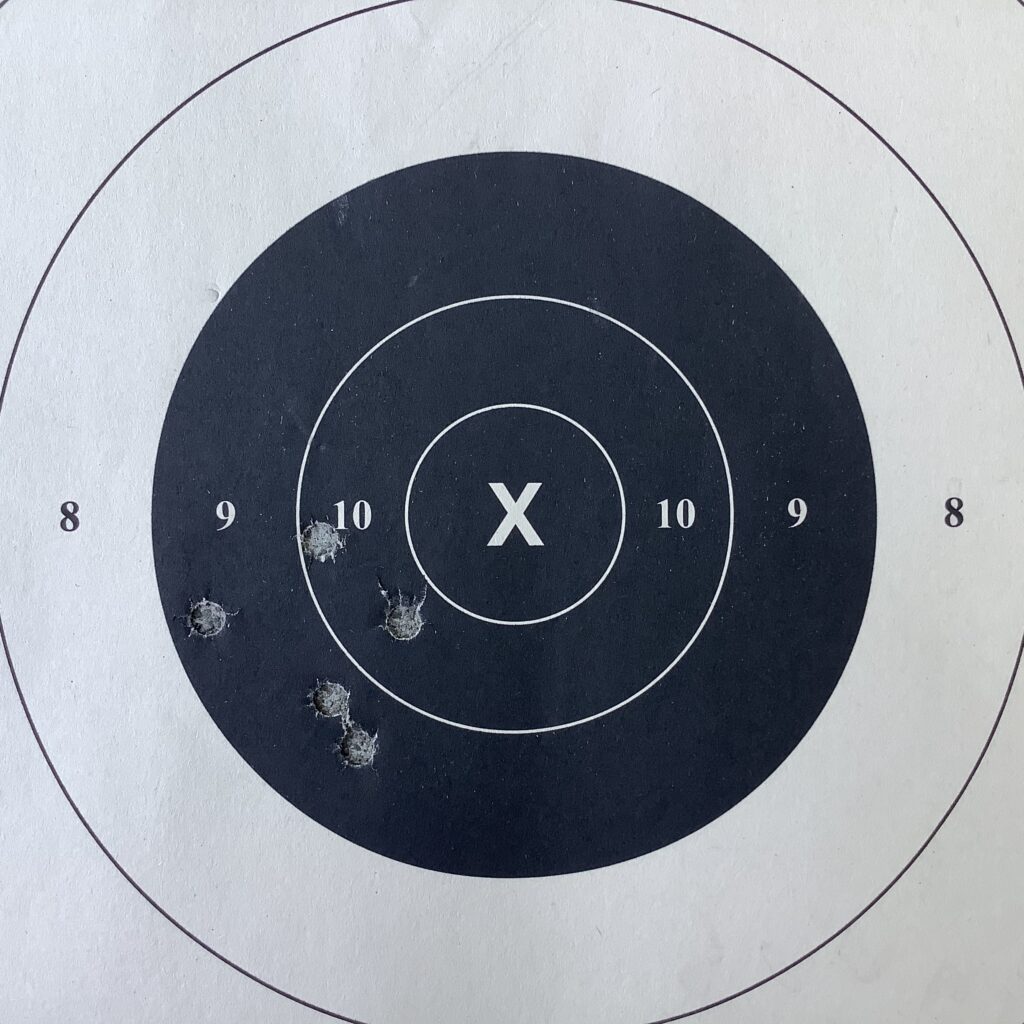
If you can accept more recoil, you can go with a number of 125-135 grain +P loads out there, and they’ll work OK for most of you. I shot the Winchester 125+P Silvertip, the Speer 135+P Gold Dot, and the Winchester 130+P PDX1 (the softest shooting of the bunch), and found they represented the upper limit of acceptable recoil in this light gun. I’m guessing the Federal 130 grain +P HST, Federal 129 grain +P Hydra-Shok, CorBon 125+P Self Defense, and Federal 120 grain +P, Personal Defense Punch would be much the same. I’ve shot the Winchester PDX1 into bare, 10% calibrated gelatin before, and know it punches about 9.25″ deep, and opens up to about 0.60″, which is pretty good from a snubby.
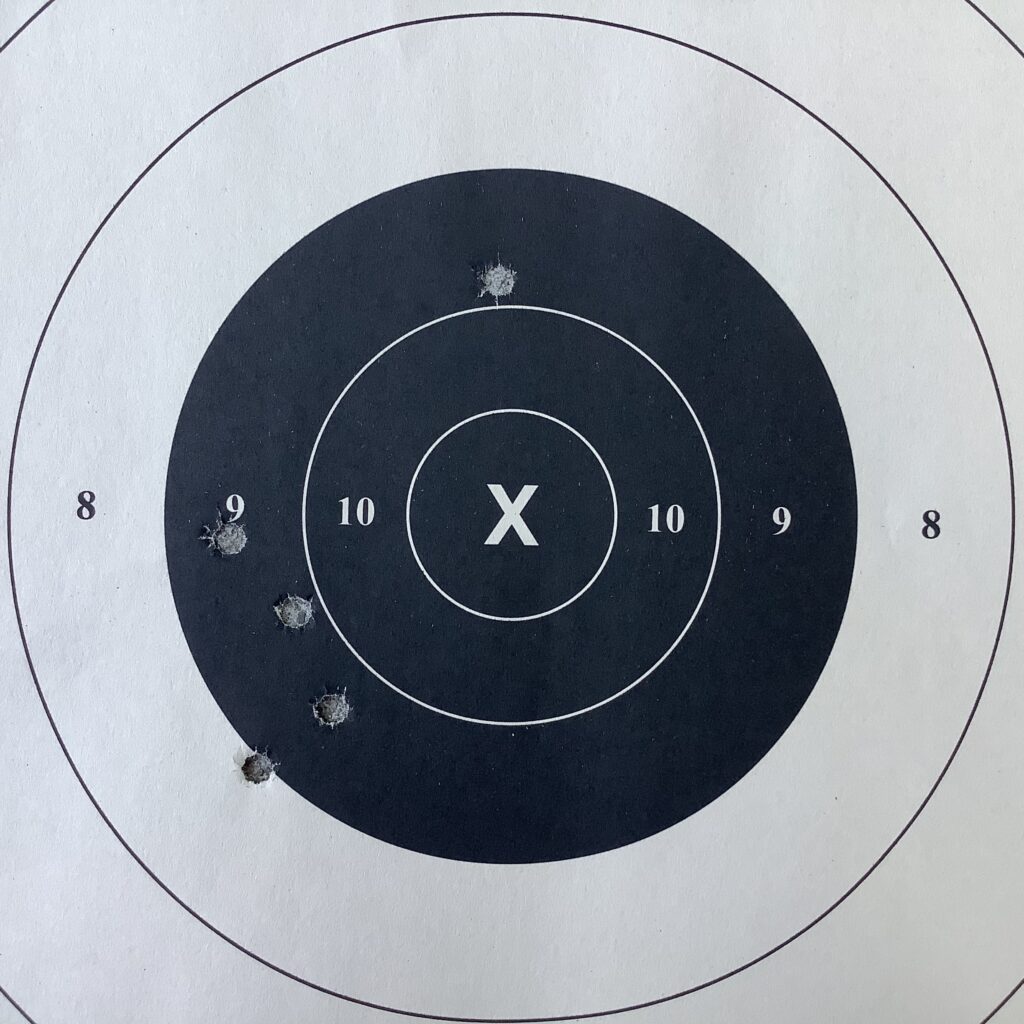
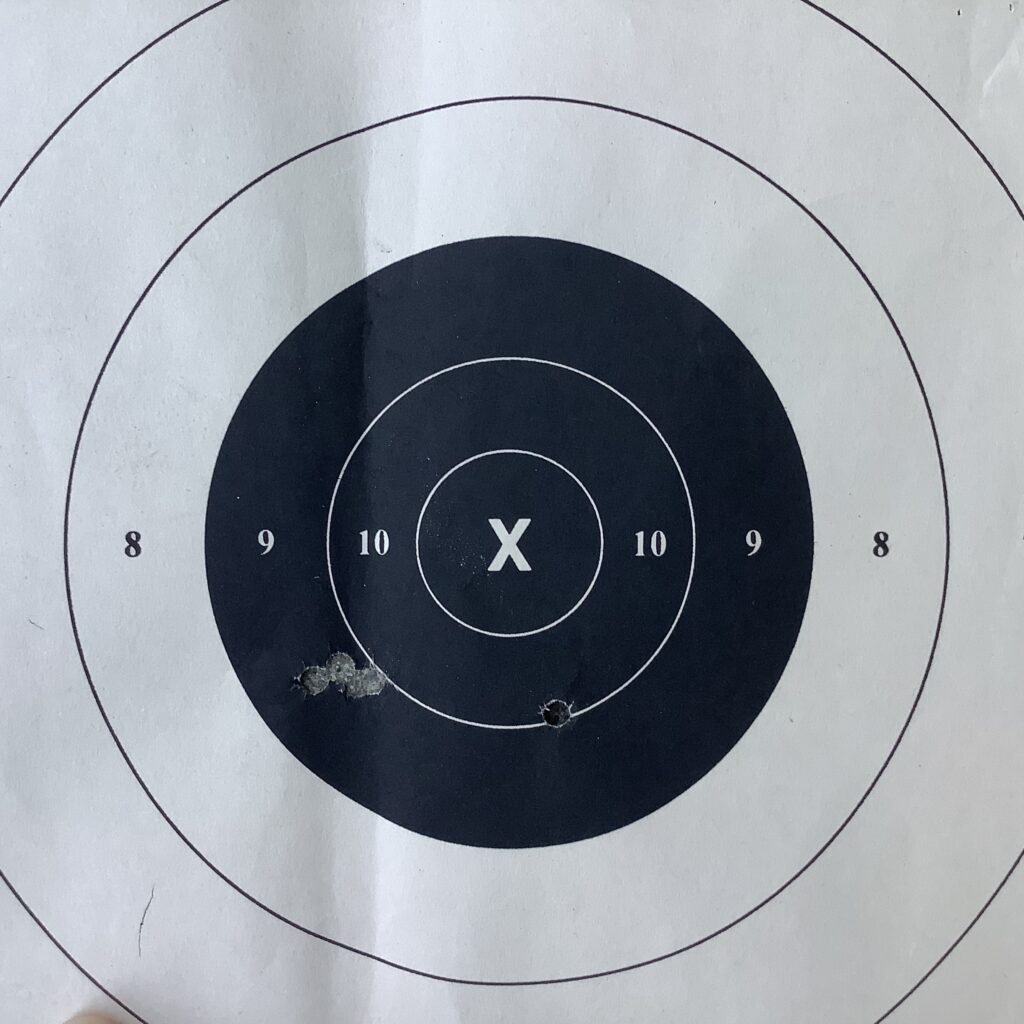
Recoil wise, I think most shooters will be happiest with lighter bullets in the .38 Special LCR. Standard pressure options to look at would be the Federal 110 grain, Personal Defense Hydra-Shok Low Recoil, the Winchester 110 grain Silvertip, the Hornady 90 grain, FTX Critical Defense Lite, and the Hornady 110 grain, FTX Critical Defense. I shot the latter two cartridges in the .38 LCR and thought the recoil was easy to control, but they hit about 2.5″ to 3″ low at 10 yards. Based on previous work with these two rounds in the lab, I know they’ll go about 8.75″ (90 grain) to 9.75″ (110 grain) in bare, 10% calibrated gelatin, and open up to around 0.50″ wide.
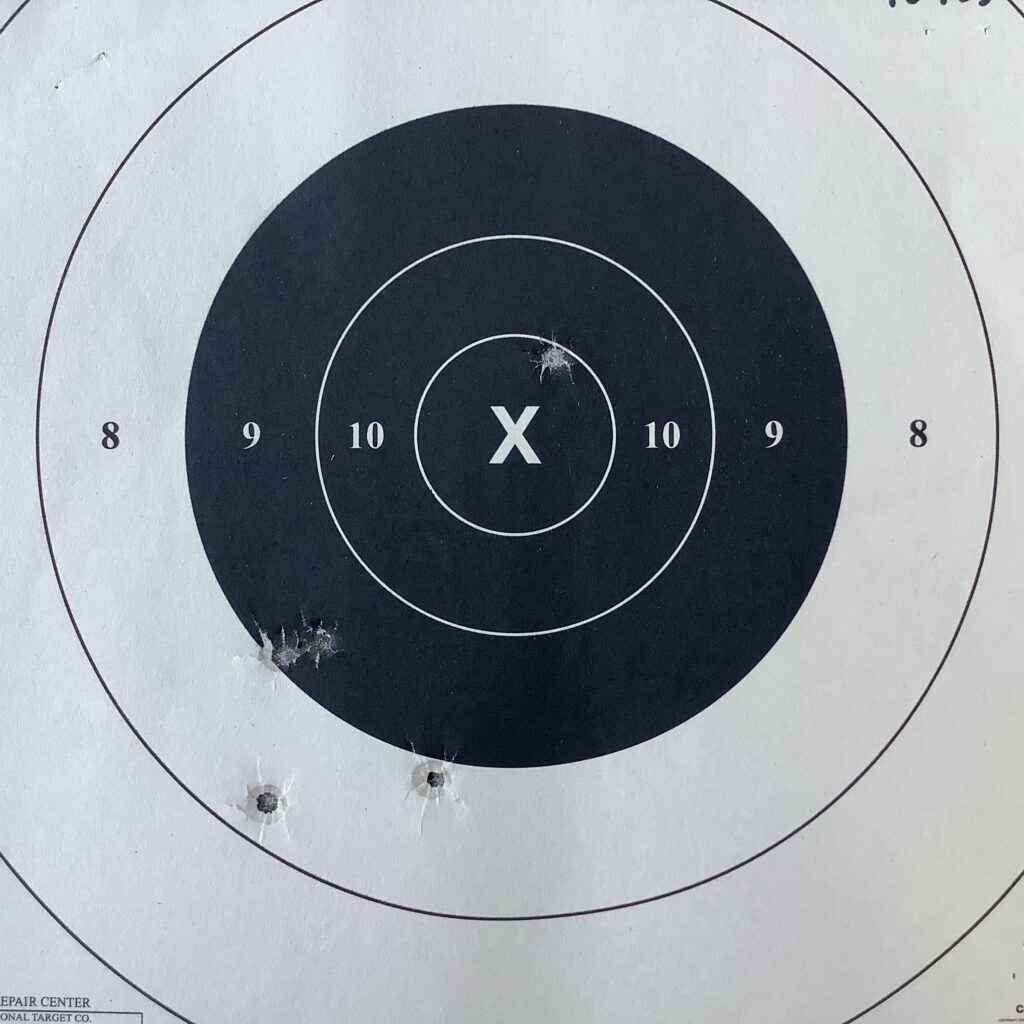
You can also bump up to a +P load in the lighter bullets. CorBon makes a 110+P using a standard JHP bullet in their Self Defense line, and Hornady makes a 110 grain +P FTX Critical Defense that would be worth a look. I shot the CorBon 110+P DPX in the .38 LCR and thought it was the lightest kicking JHP of any that I tried. It also shot to the point of aim as well. When I shot the 110+P DPX in the lab previously, it expanded to about 0.57″ and went 10.75″ deep into bare, 10% calibrated gelatin. The DPX doesn’t recoil too much, hits where you want it to, and delivers good terminal performance–with characteristics like this, it would be my preferred JHP choice for the LCR.
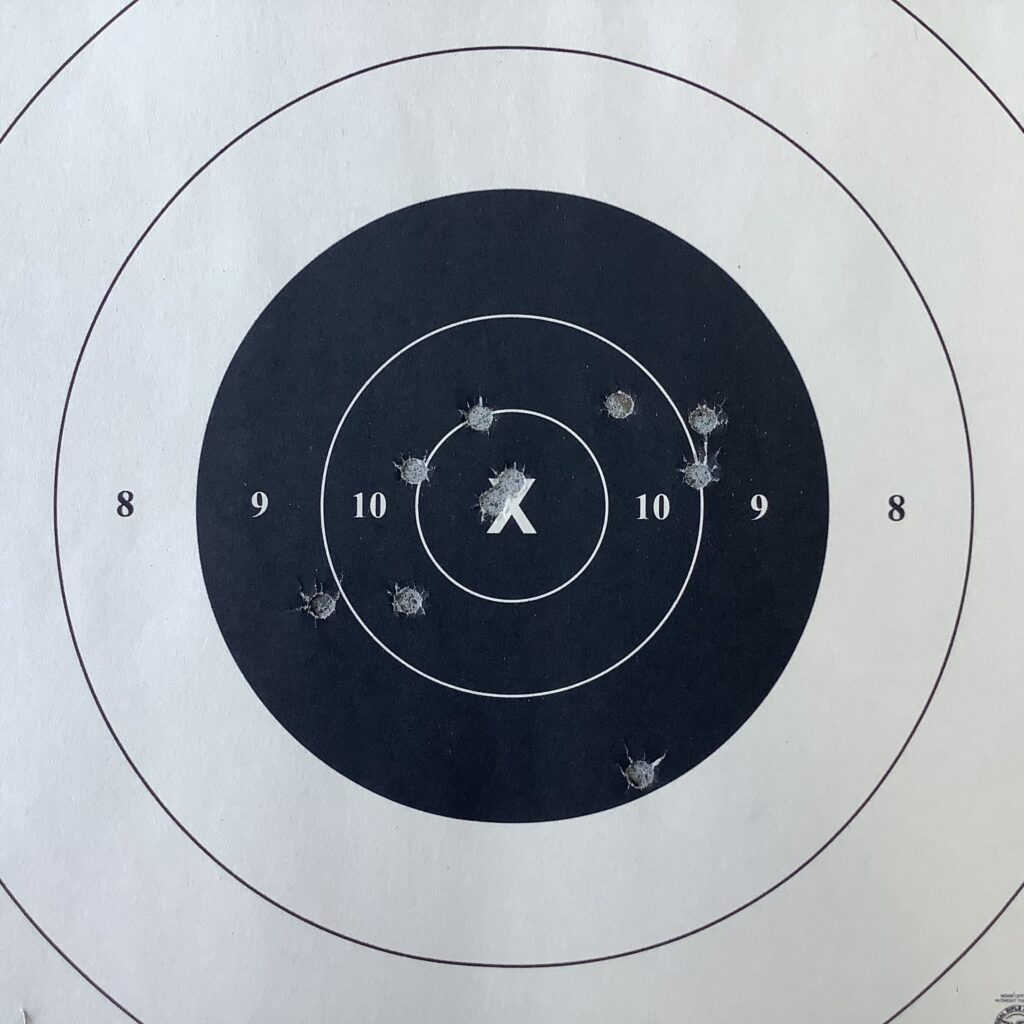
Honestly though, I’d be pretty darned happy without a JHP at all, and carrying 148 grain wadcutters in the LCR. They shoot like pussycats, hit right to the sights, and cut nice, clean holes that go deep in calibrated ordnance gelatin. What’s not to like, outside of a blunt profile that makes reloading a little tricky? You can solve that little issue by filling the cylinder with wadcutters, and your speedloader or strip loader with a JHP round like the DPX, which feeds more easily—chances are extremely good that you’ll never have to load them on the clock under duress, anyhow.
The metric Ruger drops a hint
When I shot the 9mm LCR for the first time, I was honestly quite astounded by how well the tiny gun handled the potent cartridge. The 9mm beats the .38 Special for energy and I expected more kick from the Metric Ruger, but it was noticeably more controllable than shooting the .38 Special LCR with equivalent loads (such as standard pressure, 124 grain, 9mm versus 125+P .38 Special). It didn’t beat my trigger finger up, either.
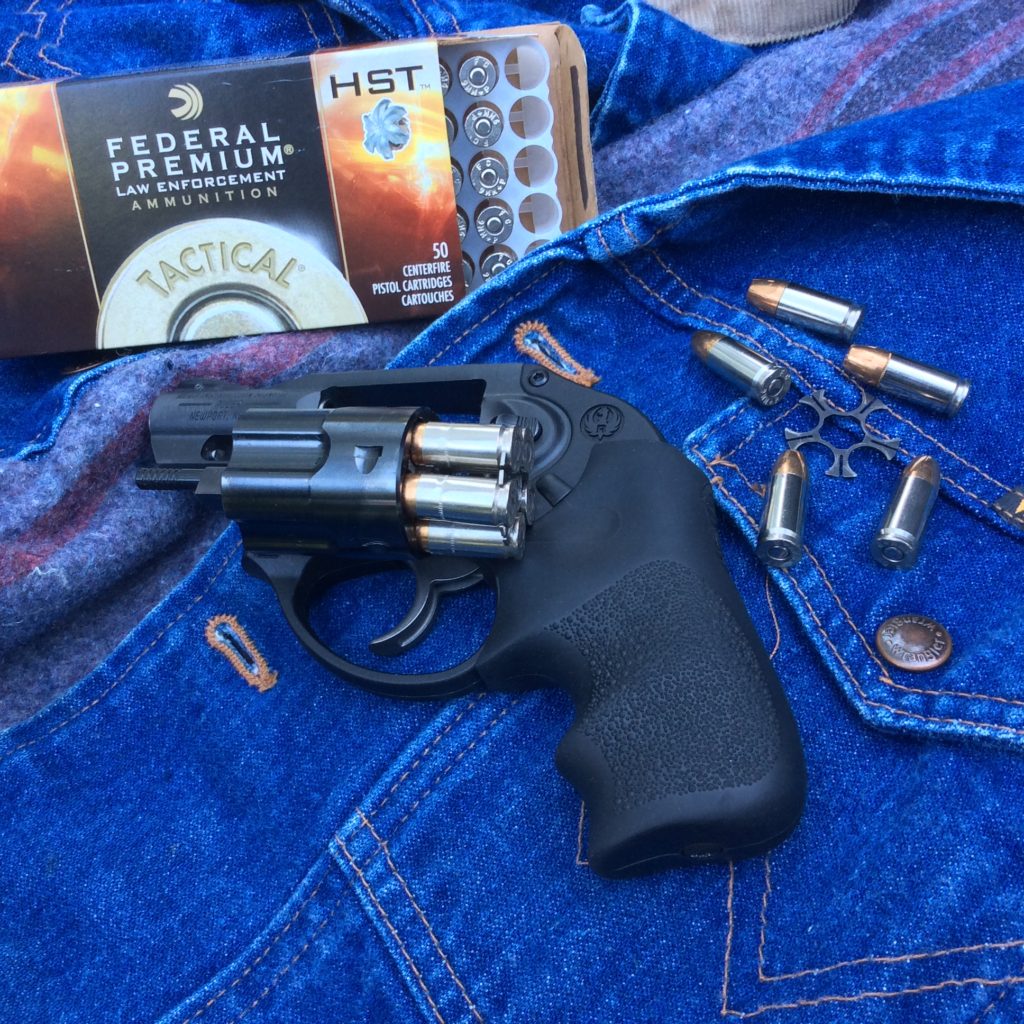
I attribute this to the fact that the upper receiver on the 9mm LCR is made of stainless steel, instead of aluminum. That adds about 3.7 ounces to the 9mm version, and I think it makes all the difference when it comes time to pull the trigger. The heavier 9mm LCR really shoots great.
Magnum Force
This experience has me thinking about the .357 Magnum version of the LCR, which also has a steel upper. Honestly, I think this could be the best caliber choice for someone considering the LCR as a carry gun. As with the 9mm, the heavier frame would neatly tame even the hottest .38 Special loads, and maybe even get you into the realm of the “light Magnum” loads like Speer’s 135 grain, Gold Dot Short Barrel Personal Protection .357 Magnum that Justin favors in his steel S&W 640 Pro.
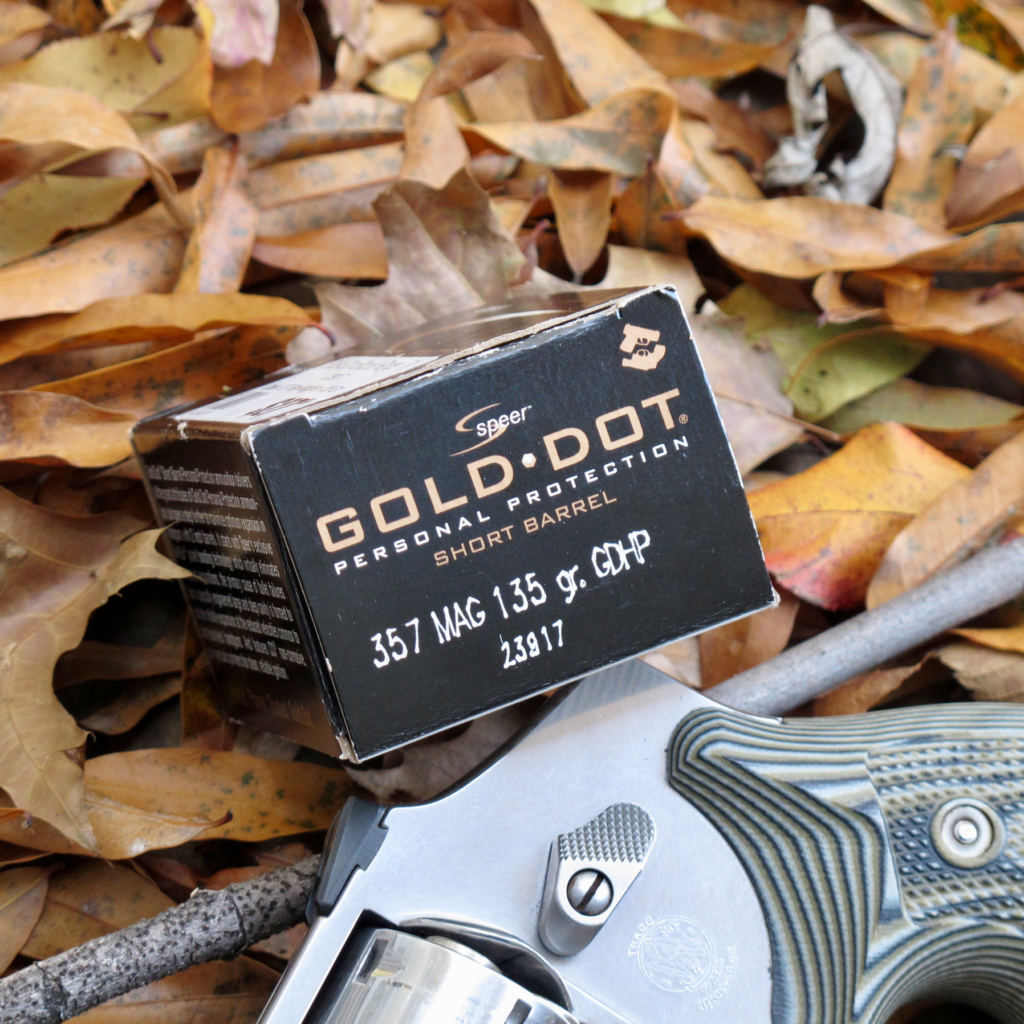 Importantly, the .357 Mag LCR would put you back into the world of rimmed revolver cartridges, making the sometimes problematic, awkward and fragile moon clip unnecessary. Although you can find ways to do it, carrying a reload in a speedloader or strip loader would be much easier than packing a loaded moon clip around.
Importantly, the .357 Mag LCR would put you back into the world of rimmed revolver cartridges, making the sometimes problematic, awkward and fragile moon clip unnecessary. Although you can find ways to do it, carrying a reload in a speedloader or strip loader would be much easier than packing a loaded moon clip around.
At 17.1 ounces, the .357 Mag LCR would be 3.6 ounces heavier than the 13.5 ounce .38 Special LCR, but that wouldn’t bother me a bit. I’ve never had a problem with my (roughly) 22 ounce, .38 Special S&W 640, so the .357 LCR’s extra weight (in comparison to the .38 Special LCR) wouldn’t phase me a bit.
Yeah, but . . .
Somewhere out there, is a RevolverGuy who’s talking to his computer screen about the .327 Federal Magnum LCR being even better, because it has a sixth round. The .327 Fed Mag is certainly a capable round, and I wouldn’t argue about the extra capacity being a benefit, but my experience with the .327 Fed Mag is that it’s no slouch in the recoil department! It really deserves the Magnum title, and I’d be much happier shooting it in the all-steel, 27 ounce, SP101 than the hybrid LCR.
Additionally, my experience is that .327 Fed Mag ammo is still much harder to come by than .38 Special or .357 Magnum loads, and usually more expensive, too. As I write this, we’re presently in the middle of yet another ammunition crisis, prompted by unstable political and social conditions, and I don’t envy the person who needs to find a supply of .32 caliber ammunition (including .32 Short, .32 Long, and .32 H&R Magnum substitutes) that was already hard enough to find before our economy was needlessly shuttered, and our major cities erupted in rioting.
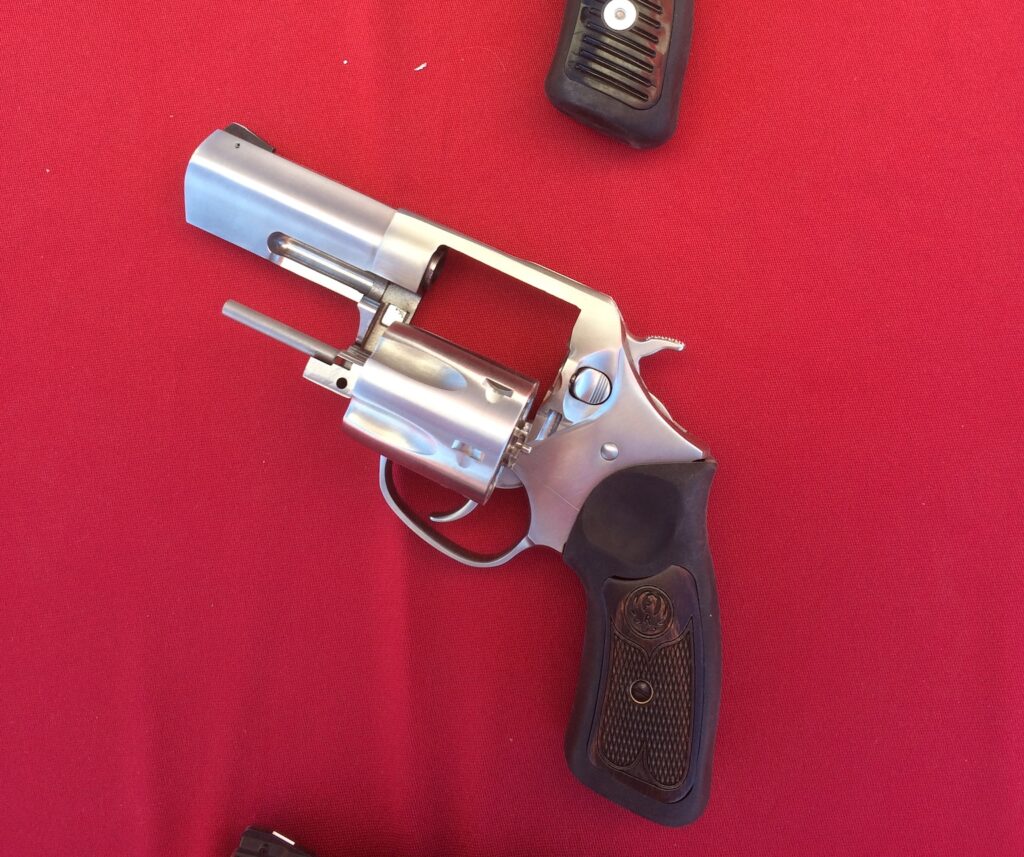
If the .327 Federal Magnum works for you, and you’ve managed to lay in a good enough ammo supply to ride out the bumps, then please proceed with my hearty blessing, but I think the .357 Magnum LCR gets my vote as the “Everyman” version of the LCR, and I’ll be looking to swap my .38 Special version for one down the road, I think.
That doesn’t mean the other LCR chamberings are bad choices—far from it! The rimfires have their place, and the 9mm is an excellent choice for someone who shoots a lot of 9mm, or needs a 9mm revolver to back up a 9mm pistol being carried as a primary gun, but I think the .357 Magnum just makes the most sense as an all-around choice. So, if you’re in the market for an LCR, I’d really encourage you to look at the .357 Magnum one, absent a compelling reason to go with another caliber.
Wrap up
The .38 Special LCR broke new ground for Ruger and it’s a heck of a gun. They really did great work on this one.
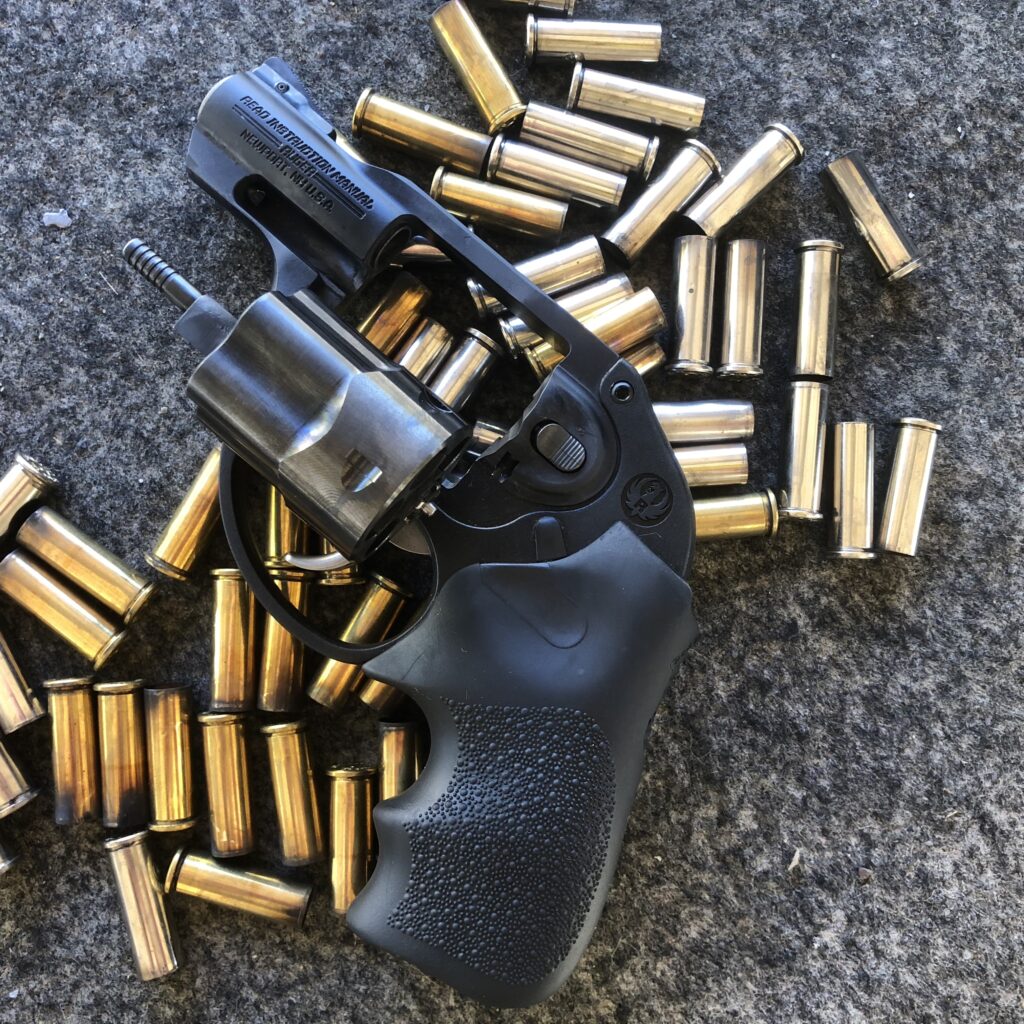
Small frame revolvers have always been a compromise game, where you have to carefully balance pros and cons. If light weight is a priority for you, and you’re comfortable with a little more recoil (or shooting a lighter load), then the .38 LCR is really a dandy of a choice. If you’re a little more concerned about recoil attenuation though, I’d encourage you to check out its big brother, the .357 Magnum LCR–the heavier frame should make you happier.
Whichever LCR you choose, enjoy shooting it, and stay safe out there, especially in these crazy times!

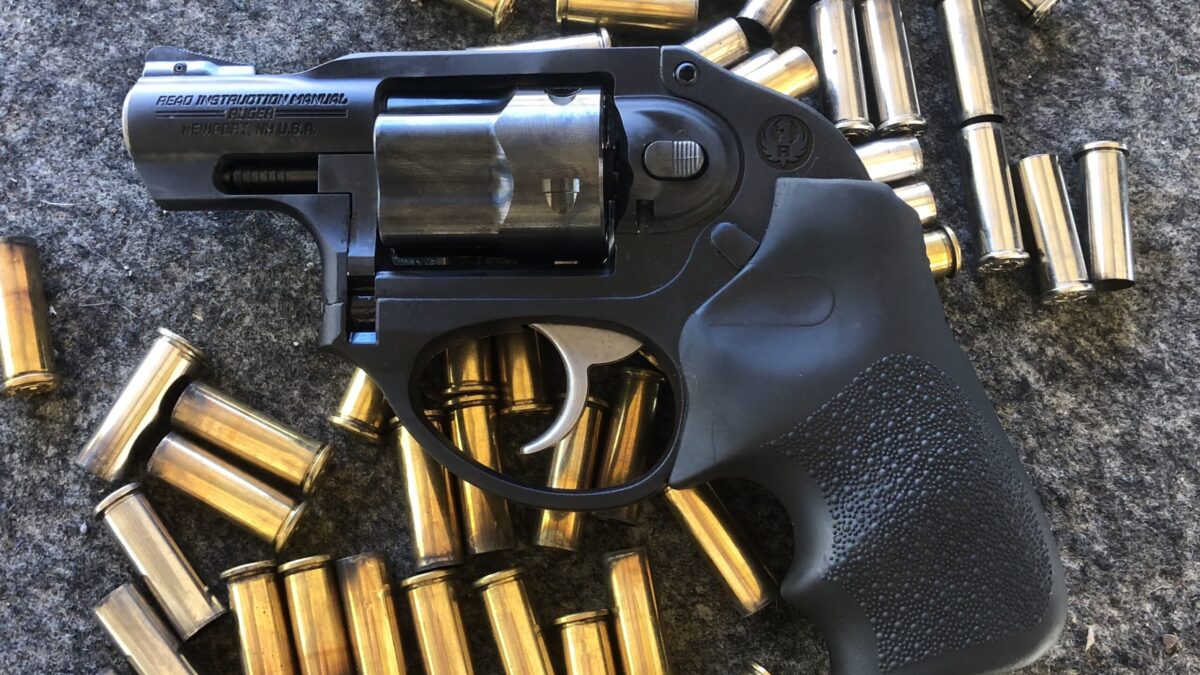
Mike,
I’ve been carrying the three inch .38 since the first year they made it. Even with the smaller grip, I have found it entirely comfortable to shoot- much more so than the snub version. This is the exact opposite (for me anyhow) of what I find with the S&W j frame and really surprised me. If you get the chance, it might be worth trying for you as well. It keeps the aluminum upper for lightweight all day carry to the point that I can almost forget I’m wearing it.
Cheers.
Thanks Riley. I’d like to get my hands on the 3” version, because I really like that barrel length for a revolver. I bet that extra inch way out there would change the recoil dynamics compared to the stubby one I have.
Excellent write up,
I’ve been carrying and shooting my .357 Lcr since 2012.
I also handload most of my ammo so I’ve been able to shoot it a lot, I love this little gun with the mentioned boot grips and find it not at all unreasonable even with magnum force rounds loaded in it.
Thanks! I think I’d enjoy shooting the heavier .357 model. I’m glad it’s been working so well for you. I’m really impressed with what Ruger accomplished on these tiny guns.
Agreed. I think you will really like this gun in the .357 version loaded with .38’s. I went that route specifically because of recoil concerns (I’m still young enough to think I can tough it out and handle the recoil, but just smart enough to know that I don’t want to regret that later when it leads to arthritis). The .38 LCR hurts the palm of my hand (despite what you experienced), and I only want to shoot about 20 rounds of 130gr FMJ through it. With the .357, I can shoot those same loads comfortably. Like you, I still wouldn’t shoot it all day, but at least I can shoot it.
Thanks Greyson. Sounds like you and me are on the same page. Different hands feel the aches in different places, eh?
The 4+1 syndrome on my sample makes me wonder if one of the chambers is not centered with the bore. The bullet might be getting damaged from the misalignment, and giving me a Crazy Ivan in every cylinder.
Yup, you got it, check chamber mouths.
Same experience with me. I found the .38 LCR with any of the three Hogue grip options really liked to inflict pain on the web of my hand. Perhaps there are other grip options now to help mitigate that, but I’m not aware of any. J-Frames have a larger variety of grips available, so I’ve had better experience there.
I suspect the reason for my experience more pain shooting the LCR than my 642 is is the use of polymer in the LCR’s grip frame. The lighter the weight, the more pronounced the recoil.
I was hoping I wasn’t being too critical of the comfort issue. I’m glad to hear you guys chime in with your own thoughts. It sounds like we’ve had similar experiences.
I finally had the opportunity to shoot another student’s the .38 version of the LCR at Greg Ellifritz’s snubby class this year and found it to be much more shootable than the airweight 442 I use in the “pocket revolver” role. The only issue I noticed is that at least one of the other students had a tendency to short stroke the trigger. Have you found this to be a problem at all?
Hi Brendan, thanks for writing in. I think you’re seeing two things at play. First, the trigger return on the LCR seems lighter than some other guns, and there’s a bump that can trick unfamiliar people into thinking it has reset. Second, and most importantly, some people are letting their autopistol habits bleed over when trying to shoot revolvers, and it creates problems because revolvers require a different manual of arms.
To explain the latter, many autopistol shooters try to “ride the sear” and release the trigger only as far as necessary to reset the sear. I won’t go into my diatribe about why I think that’s a bad idea, but will simply note that this habit is NOT compatible with shooting a revolver—ANY revolver, from ANY brand. Revolvers require you to let the trigger move fully forward before you pull them again, for best reliability, and when you get someone whose trigger finger is used to riding the sear, they often short stroke a revolver trigger.
This isn’t just a Ruger thing, but the less powerful trigger return and the bump on the LCR trigger will encourage a problem if the shooter is already applying the improper technique, born of his autopistol habits. Sometimes this problem goes unnoticed on other guns. For example, the much more robust trigger return on an SP101 or your average S&W (with factory springs) can help to mask this kind of operator error, by forcing the trigger forward against the shooter’s best effort to restrain it.
FWIW, I noticed the new Colts also have a “false reset,” which I put in quotes because it’s no such thing. Colts, like all revolvers, should be allowed to let the trigger have a full return for best reliability.
Revolvers simply work different than autos, and trying to feel for the sear reset is not the proper way to work them. The real culprit here is that most shooters these days live with autos, and only occasionally play with revolvers, so their habits are driven by the square gun. We all know that square pegs and round holes aren’t a good fit!
Thank You, Mike, for the review. I love my LCRs and, depending where I’m going and who I with, carry two. I swapped out the stock grips for Hogue bantam grips. They don’t feel as good but are more concealable. They’re stoked with HST which I much prefer in .38.
I anxiously await for you to post a new article. Thanks again!
Mike, thanks for the review! I really like my .38 LCR. I mainly shoot and carry 148 wadcutters with 158 semi-wadcutters.for reloads. I find them pleasant to shoot based on testing and experience of others that they give good penetration. I would love to have the .327 version to shoot.32 long wadcutters or .32 H&R magnum loads but have hesitated due to the undependable ammo supply.
My wife’s granddad said in his day .38s were for home defense and .32s were for carrying.
I have been carrying a Ruger LCR in .38Spl since 2012, I keep mine in a trigger scabbard…carry it with 125gr Nyclad bullets…a great performer, light, accurate & dependable.
I acquired an LCR .38 for my wife a few years ago but she didn’t like the recoil so I got her the heavier Night Cobra. I wasn’t expecting to like the LCR as much as I do – ended up keeping it for myself and it’s pretty much all I carry anymore. I find the DoubleTap 148gr hardcast wadcutter is perfect with this revolver; a little hotter than typical wadcutter target loads but still very comfortable to shoot and I can do pretty well out to about 20 yards.
Thanks for this and all of your revolver articles, I find them informative enjoyable to read.
Thank you Sir! We’re glad to have you here. I think you found the perfect load for that LCR—the wadcutters are very controllable, and the hardcasts from Doubletap and Buffalo Bore are even better choices than the soft lead target WCs. I hope you found the Night Cobra article, too.
I have to say while I have owned and liked several LCR’s in .38,.357, and .22 Mag, my hands down favorite that I think is the .327 Magnum. I really think it is the modern day Colt Agent in size, and just a little different from the j frames. I train with .32 longs and usually carry .32 H&R Magnums. I like having the ability to go from a board shorts gun to a outdoors recreational gun (mountain biking, fishing, etc.) by loading up .327 Magnum.
I’ve only shot the .327 Fed Mag in the SP101, and I walked away thinking, “this cartridge is no joke.” It was marketed as “a .357 that doesn’t kick,” but that was a load of B.S.— the Fed Mag really deserves the Magnum title. It barks.
I can see why you would lean towards Longs for training and H&R Mags for carry in the lightweight LCR. That makes a lot of sense to me. I think stoking it with Fed Mags would be “too much candy for a dime,” as somebody once said. I’d prefer the steel SP101 if I wanted to shoot a lot of the Fed Mag in a snub!
I too love the .327 Federal LCR. And, like you, .32 H&R Mag. Critical Defense (which it is impossible to find right now) or Buffalo Bore .32 H&R Mag. (which you can find) is what I carry and I practice with .32 S&W Long. According to the FBI’s 2014 ballistic test, shot placement is the
most critical component to achieving BG incapacitation. .32 H&R Mag. is soft shooting, allows very quick follow ups, and shoots to POA out of the LCR.
The FBI report also showed that the single most important factor in effectively wounding a human target is to “have penetration to a scientifically valid depth.” .32 H&R Mag does exactly that. If you look at Chris Baker’s ballistic testing you’ll find that the FTX Critical Defense consistently penetrates to the FBI standard of between 12 to 18 inches (average 14.1 inches) and consistently expands to about .40 inch. The Buffalo Bore .32 H&R is a hard cast lead bullet and doesn’t expand, but gives as consistent penetration.
I find .32 S&W Long practice ammo all the time at about 44 cents around and that’s as cheap or cheaper than most all .38 Special wadcutter (I have the LCR in .357 and shoot it in IDPA BUG). Shooting .32 S&W Long is almost like shooting a .22 LR and I like to train new shooters with it (no recoil, no flinch).
The little 327 LCR is easy to carry, easy to conceal, and rapidly puts lead on target. I have no hesitation carrying it as my EDC gun.
After shooting real Fed Mag in the .327 LCR my thought was WOW, that is every bit of .357 Magnum and would give me some good capability for four legged predators. I think the H&R is a solid two legged predator round. I also have a S& 431 I love, but they are rare and expensive so I am trying to find another .327 LCR for a spare/second gun.
Maybe you’ll find one at a shop, next to a box of cartridges with only six missing—kind of like when the Model 29 came out! Ha!
Thanks for the article on the LCR. I was turned off with their looks when they first came out and haven’t seriously looked at them since, but I just read your article(s) on the LCR and will give them a try.
I just recently sold a nice shooting 642-1 because the sights were hard to pick up quickly. The pinned front sight really appeals to me on the LCR.
People seem to pay lip service to this being a defensive handgun, not a range gun. Then the but comes and complaints about comfort after 50 rounds.
I’ve got the .38 spl LCR and love it. I take it to the range and shoot maybe 25-30 rounds of practice ammo and a cylinder or two full of 125 gr +p sjhp. Then switch to a comfortable gun and shoot to my hearts content. The same skills carry-over.
You wouldn’t take your .338 win mag to the range and shoot 60 rounds. You’d shoot 20-30 rounds and switch to a .22 or whatever. We need to seperate the fun hobby of buying, selling and trading guns from the actual use of guns for specific purposes.
Good article.
If your index finger is getting whacked, increase grip tightness, especially off-hand thumb, holding muzzle down with thumb indentation.
Squeezing a rubber ball while watching tv has made me a much better handgun shooter.
Newbie shooter here, and just purchased the snub. I happened upon 38 Special – PMC Bronze 132 Grain FMJ for sale, searched 132 gr for the LCR, and came upon this stellar article. This ammo is probably ok for target, but I’m wondering why 110 gr is recommended for defense. Clueless! Any enlightenment is so very much appreciated, and this article is definitely a keeper. Thank you.
Hi Deb, we’re glad you found us and happy the article was useful to you! Welcome aboard!
The .38 Special +P 110 grain Corbon DPX load was an excellent performer in my Ruger LCR. It was the softest shooting of all the hollowpoint (HP) loads that I tried, and it also hit closest to the sights. Since I know the terminal ballistic performance of this round is excellent, based on previous testing, it would be my best recommendation for people who want to shoot a HP bullet in their .38 caliber LCR.
That doesn’t necessarily mean other 110 grain loads will perform the same. You’ll note from the article that when I shot the .38 Special 110 grain Hornady Critical Defense load in the gun, that it printed quite low—almost three inches at 10 yards. With the Corbon DPX, wherever I put my sights is where the bullet would go, but with the Hornady Critical Defense, it always hit much lower than the sights, which is not optimum.
One thing that the 110 grain bullets have going for them is that they weigh less than the 125, 130, 132, 135, and 158 grain bullets in the caliber (the “grains” in “110 grains” is a measure of the bullet weight, not the amount of powder grains in the case. So, a 110 grain bullet weighs 20 grains less than a 130 grain bullet, for example). This reduction in weight generally helps to reduce the recoil you feel when you shoot the gun, which, in turn, makes the gun more comfortable to shoot and easier to control. This is why I suggested 110 grain loads might be appealing to some shooters of this gun, and highly recommended the Corbon DPX as my favorite of the bunch.
If you would like to learn a LOT about selecting ammo for your LCR, I’m going to recommend two articles on our site. Here’s the links for them:
Wadcutters For Self Defense
.38 Snub Ammo
There’s a lot to digest in those articles, but I think they might provide some of the education you are seeking on the subject of choosing self defense ammunition.
If you like what you saw in those articles, then there’s a third that I’ll recommend:
.38 Special +P and +P+
If you have any questions, please feel free to let us know in the comments, or write me an email using our Contact Page. We’ll be glad to help you out.
Once again, welcome aboard! We hope you’ll stick around and enjoy the site. Lots of good information and people here!
I inherited the LCR .38 +P and I have enjoyed learning about this gun. I was drawn to this as an ideal pocket pistol for concealed carry, particularly for older people who might be more recoil sensitive; it’s lightweight and double action trigger. Research lead me to wadcutters as being a good choice for a self defense round with this revolver due to the excellent penetration.
Initially I started casting and reloading the 148gr HBWC and could only generate 750 fps consistently with my standardized pistol powder W231, and feel safe with the pressures. Then I stumbled across the 100gr DEWC and found my load! I cast these lead bullets and are heat treated so they are hardened to the “hardcast” category > 20 BHN. I can easily drive them at 950 fps and not come close to over pressuring the gun. What is interesting is that these little wadcutters at 950 fps deliver almost the same energy as the 148gr wadcutter at 800 fps. The best part? Recoil is very mild and it is a pleasure to shoot even with the slimmed down low profile grip I put on this revolver.
One complaint about this gun is that it is somewhat complicated, not real simple to take down the internals and clean, lots of small fragile parts. There is a nut called the fire control housing nut that fell out of the gun just from shooting the first 75 rounds, it was lost! I had to order another one, but this is just an example of the complexities of this little gun. Ruger has some great YT videos on tear down, cleaning, and reassembly and in the vids the Ruger amorer gives some great insights on how to care for the gun withing breaking some of the more fragile parts.
Great article, btw, I enjoyed reading it.
Sounds like a great combination Kyle. I’m glad you enjoyed the article and hope your Ruger will continue to serve you well. If you didn’t see our article on wadcutters for defense, you might enjoy it:
Wadcutters For Self Defense
Great review Mike and thank you for getting to the point about the recoil. Other writers are dodging the issue and it is an issue. It took me 2 years to go through a box of 148g +P. Every round felt like I was hitting a metal light pole with an aluminum baseball bat. While the recoil was much less than my 44 magnum the LCR hurt me in ways the .44 never did. For me, pursuing FBI protocols for expansion and penetration in a 13 ounce 38 Special has been an exasperating and painful ordeal. I think the wadcutter idea is brilliant. Thank you very much!
You bet, Keith! I started to wonder if I was just being a wimp, because nobody else was talking about it, but I finally decided they were just clamming up. The lightweights kick hard with powerful loads, and I know a lot of serious gunmen who carry wadcutters in their snubs to avoid the pain and concentrate on providing more accurate hits.
Be safe out there!